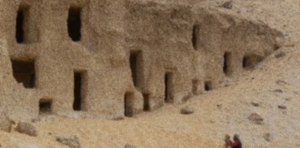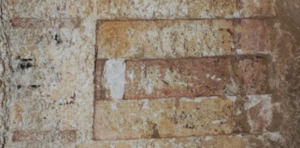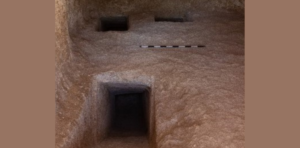Archeologists Discovered 250 Tombs Cut In Rocks In Egypt
The tombs range in date from 2200 BC to 30 BC, and it’s believed more will be discovered upon further exploration.
When it comes to amazing discoveries, it’s difficult to top what Egypt brings to the table. They have such a rich history and there is so much still buried under the sand that has yet to be discovered.
In many cases, they dig with a purpose, but occasionally, they find something by accident. That is what happened when they discovered hundreds of tombs cut in the rocks at the Al-Hamidiyah necropolis near Sohag, Egypt.

According to Egyptian Ministry of Tourism and Antiquitiese, it happened when archaeologists were looking along the banks of the Nile in southern Egypt. There was a sheer mountain face in the area and as they looked closer, they found cut tombs that were carved into the rock. There were about 250 of those tombs that were found, although they are expecting that there are many more to be found in the area.
It is estimated that the tombs are from about 2200 BC at the oldest and 30 BC at the newest. It covers some 2000 years, so these tombs may have been used from the old Kingdom all the way until Roman Egypt was established.

Most people are accustomed to seeing the pictures and videos of luxurious tombs for the pharaohs, such as what is found at the Valley of the Kings. In this particular case, however, the tombs are somewhat smaller but they still may have held the remains of governmental authorities from a nearby city.
Looking into these tombs and studying the contents will undoubtedly help us learn more about the life of those living in Egypt.

The head of the Central Department of Antiquities for Upper Egypt, Mohamed Abdel-Badiaa, had the following to say about the find according to Smithsonian: “Egypt has many antiquities sites, but light must be shed on other unknown areas….[Excavations] should not be limited to famous archaeological areas such as Saqqara or Luxor.”
SKM: below-content placeholderWhizzco for DOT

